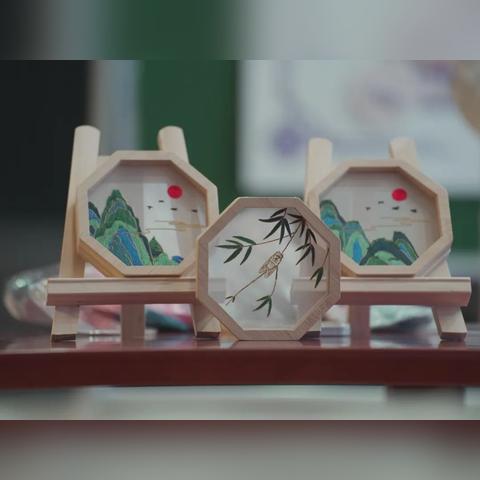A Comprehensive Guide to Evaluating the Quality of Textiles
This comprehensive guide to evaluating the quality of textiles provides a detailed overview of key factors that impact the overall performance and durability of these materials. Factors such as color accuracy, fabric texture, thread count, and stitching quality are examined in depth to help consumers make informed purchasing decisions. Additionally, the guide covers topics like dyeing methods, environmental impact, and sustainability practices, highlighting how these factors can influence the longevity and aesthetic appeal of textiles. By providing practical tips and techniques for assessing the quality of textiles, this guide aims to empower consumers with the knowledge they need to make confident choices when shopping for clothing or home decor items made from these versatile materials.
Introduction Textiles are an integral part of our daily lives, from clothing to furnishings. When it comes to evaluating the quality of textiles, there are several factors to consider. In this guide, we will explore the different aspects that contribute to the overall quality of a textile and provide examples to illustrate how these factors can be assessed.

Material Selection The first step in evaluating the quality of textiles is to examine the material used in their production. Textiles are made from various materials, including cotton, polyester, wool, and silk. Each material has its own unique properties that determine its suitability for specific applications. For example, cotton is soft and breathable, making it ideal for clothing; polyester is strong and durable, making it suitable for outdoor wear; wool is warm and comfortable, making it ideal for winter wear; and silk is smooth and luxurious, making it suitable for high-end fashion.
Color and Weave The color and weave of a textile also play a significant role in determining its quality. Color refers to the hue of the fabric, while weave refers to the pattern of the threads woven together. Both factors affect the appearance and comfort of a textile.
Color:
- Bright colors tend to be more vibrant and eye-catching, while muted colors are more subtle and elegant.
- Natural fibers like cotton and linen have a natural color variation, which adds to their charm.
- Synthetic fibers like polyester and nylon may have a more uniform color due to their man-made origin.
- The colorfastness of a textile is measured by how well it retains its original color over time. High-quality textiles should maintain their color even after washing or exposure to sunlight.
Weave:
- Patterned weaves, such as stripes or checks, add visual interest and texture to a textile.
- Woven textiles with tighter weaves are generally stronger and more durable than those with looser weaves.
- The thickness of a textile can also be determined by its weave. Thinner weaves are often lighter and more breathable, while thicker weaves are heavier and warmer.
Quality Control Once the material and color/weave have been selected, the next step is to assess the quality control measures taken during the manufacturing process. This includes examining the thread count, ensuring that the yarns are of high quality, and checking for any defects such as holes or fraying.
Thread Count Thread count is a measure of the number of threads per square inch in a textile. Higher thread counts indicate better durability and strength. However, it's important to note that thread count alone does not guarantee quality; other factors such as yarn type and weave should also be considered.
Yarn Quality The yarn used in the construction of a textile plays a crucial role in its overall quality. Yarn quality can be evaluated based on its strength, elasticity, and resistance to pilling and fading. High-quality yarns are made from premium fibers like cotton, linen, and wool, which are softer and more absorbent than synthetic fibers.
Weaving Technique The weaving technique used in the production of a textile can also affect its quality. Some techniques, such as twill and ribbing, add texture and visual interest to a textile, while others, such as plain weaving or crocheting, create a more uniform look. It's important to choose a weaving technique that aligns with the intended use of the textile.
Finishing Process Finally, the finishing process plays a vital role in determining the overall quality of a textile. This includes processes such as dyeing, printing, and finishing with coatings or embellishments. High-quality textiles should have been treated with eco-friendly dyes and finished with protective coatings that enhance their durability and longevity.
Conclusion In conclusion, evaluating the quality of textiles requires a comprehensive approach that considers both the material and color/weave selection, as well as the quality control measures taken during the manufacturing process. By understanding the various factors that contribute to the quality of a textile, consumers can make informed decisions when purchasing garments, furniture, or home decor items.

在讨论纺织品的好坏时,我们可以通过多个方面来全面评价其品质,以下是一篇英文口语化的内容,结合表格和案例说明,旨在提供实用的评价方法和技巧。
评价纺织品的基本原则
评价纺织品的好坏,首先需要明确几个基本原则,我们要关注纺织品的材质、工艺和设计,材质是基础,决定了产品的耐用性和舒适度;工艺则体现了生产过程的精细程度和工艺水平;设计则直接关系到产品的美观度和实用性。
材质与性能评价
-
纤维类型:不同的纤维具有不同的吸湿性、透气性、耐热性等特性,这些特性直接影响到纺织品的舒适度和耐用性,天然纤维如棉、麻具有天然的吸湿性和透气性,适合各种气候条件;合成纤维则具有较高的强度和耐用性,但可能缺乏天然纤维的天然质感。
-
织造工艺:织造工艺包括织造方法、密度、线圈结构等,这些都会影响纺织品的外观和手感,紧密的织造工艺可以提供更好的耐磨性和抗皱性;而松散的织造工艺则可能更适合追求时尚感的消费者。
工艺与美观评价
-
印花与绣花:印花和绣花是纺织品中常见的装饰手法,它们可以增加产品的美观度,优质的印花和绣花可以展现出精湛的工艺和艺术感。
-
设计感:设计感是纺织品的一大亮点,它体现了产品的创新性和个性化,设计师需要考虑到消费者的需求和审美习惯,创造出符合市场需求的产品。

案例分析
-
优质面料案例:以某知名品牌为例,其采用高品质的天然纤维和先进的织造工艺,打造出舒适耐用的纺织品,该品牌的面料具有优良的吸湿性、透气性和耐热性,同时外观时尚大方,深受消费者喜爱。
-
劣质面料案例:相反,有些劣质纺织品可能存在材质较差、工艺粗糙等问题,导致使用体验不佳,消费者在购买时需要谨慎选择,避免购买到劣质产品。
总结评价方法
在评价纺织品的好坏时,我们可以采用多种方法,首先可以通过观察纺织品的外观、手感、质地等来初步判断其品质;其次可以参考行业标准、消费者评价等来进一步了解其品质;最后还可以通过案例分析等方法来深入了解其品质和特点。
补充说明表格
以下是补充说明的一些表格内容:
| 评价维度 | 评价标准 | 具体案例 |
|---|---|---|
| 材质 | 纤维类型 | 该品牌采用高品质的天然纤维 |
| 工艺 | 该品牌采用先进的织造工艺 | |
| 设计 | 美观度 | 该品牌的设计符合市场需求,展现出独特的设计感 |
| 工艺 | 工艺水平 | 该品牌注重生产过程的精细程度和工艺水平 |
| 产品性能 | 舒适度 | 该产品具有优良的吸湿性、透气性和耐热性 |
| 产品特点 | 耐用性 | 该产品具有较高的强度和耐用性 |
| 市场反馈 | 消费者评价 | 该产品在市场上受到消费者好评 |
评价纺织品的好坏是一个综合性的过程,需要从多个方面进行考虑,在评价纺织品时,我们需要关注材质、工艺、设计、性能等特点,同时还需要参考行业标准、消费者评价等来进一步了解其品质和特点,通过综合评价和分析,我们可以更好地了解纺织品的好坏,为消费者提供更加准确和可靠的购买建议。
Articles related to the knowledge points of this article:
Ranking the Number of Chinese Textile Brands



